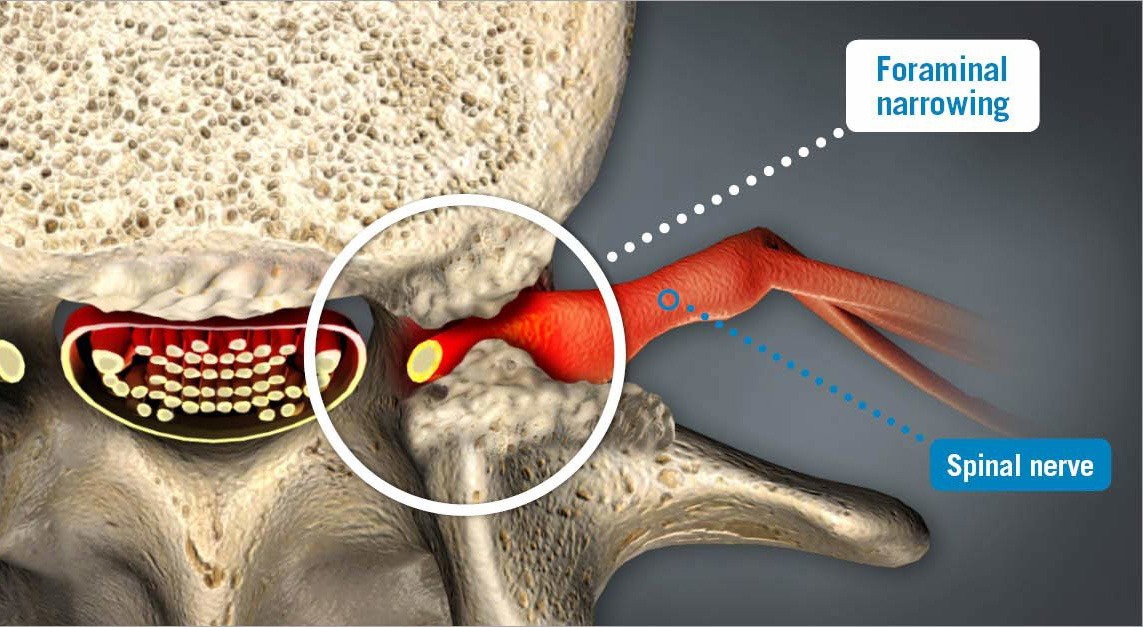- Conditions
- Procedures
- Patient care
- Why choose us
- Our Doctors
- Contact
Home » Spine Conditions »
Foraminal narrowing overview

Foraminal narrowing, or foraminal stenosis, is a condition of the spine that can cause pain and other symptoms resulting from spinal nerve root compression. At every level of the spine, a pair of nerve roots runs through the spinal column via small openings called foramina (singular: foramen). When narrowing, or stenosis, occurs in the foramina, the space available for the nerve roots to pass is reduced. While narrowing of the foraminal canals does not necessarily elicit symptoms, if a nerve root is irritated or compressed, it can cause pain that radiates along the length of the nerve, as well as tingling, numbness or weakness within the muscle group innervated by the affected nerve.
Causes of foraminal narrowing
Most cases of foraminal stenosis are related to gradual anatomical deterioration that is associated with the aging process. The vertebrae, intervertebral discs and other spinal components break down after years of wear and tear, especially within the cervical (neck) and lumbar (lower back) regions of the spine. Usually, this anatomical degeneration affects one side of a vertebral segment, producing unilateral foraminal narrowing. Sometimes, degeneration affects both sides of a vertebral segment, and this is known as bilateral foraminal stenosis. Conditions that can produce stenosis within the foraminal canals include:
- Bulging disc — a portion of the outer disc wall can protrude into foraminal space.
- Herniated disc — extruded disc nucleus material breaks through a tear in the disc’s outer wall and leaks into the foraminal opening.
- Bone spurs — osteophytes resulting from arthritis of the spine can grow along the edges of the foramina, constricting available space.
- Spondylolisthesis — slippage of one vertebra over another can reduce foraminal space significantly.
- Spinal injury — a fracture or compression injury can displace the vertebrae, thereby reducing the space available for nerve roots to branch off the spinal cord.
- Degenerative disc disease — deterioration of an intervertebral disc can reduce the disc’s height, shrinking the foraminal space available for nerve roots to pass.
Treatment for foraminal narrowing
An attempt to manage symptoms associated with foraminal narrowing typically begins with exercise, pain medication and/or corticosteroid injections. If symptoms persist after several weeks of conservative treatment, contact USA Spine Care to determine whether a minimally invasive, outpatient procedure known as a foraminotomy may be able to help you find relief from neck or back pain.
